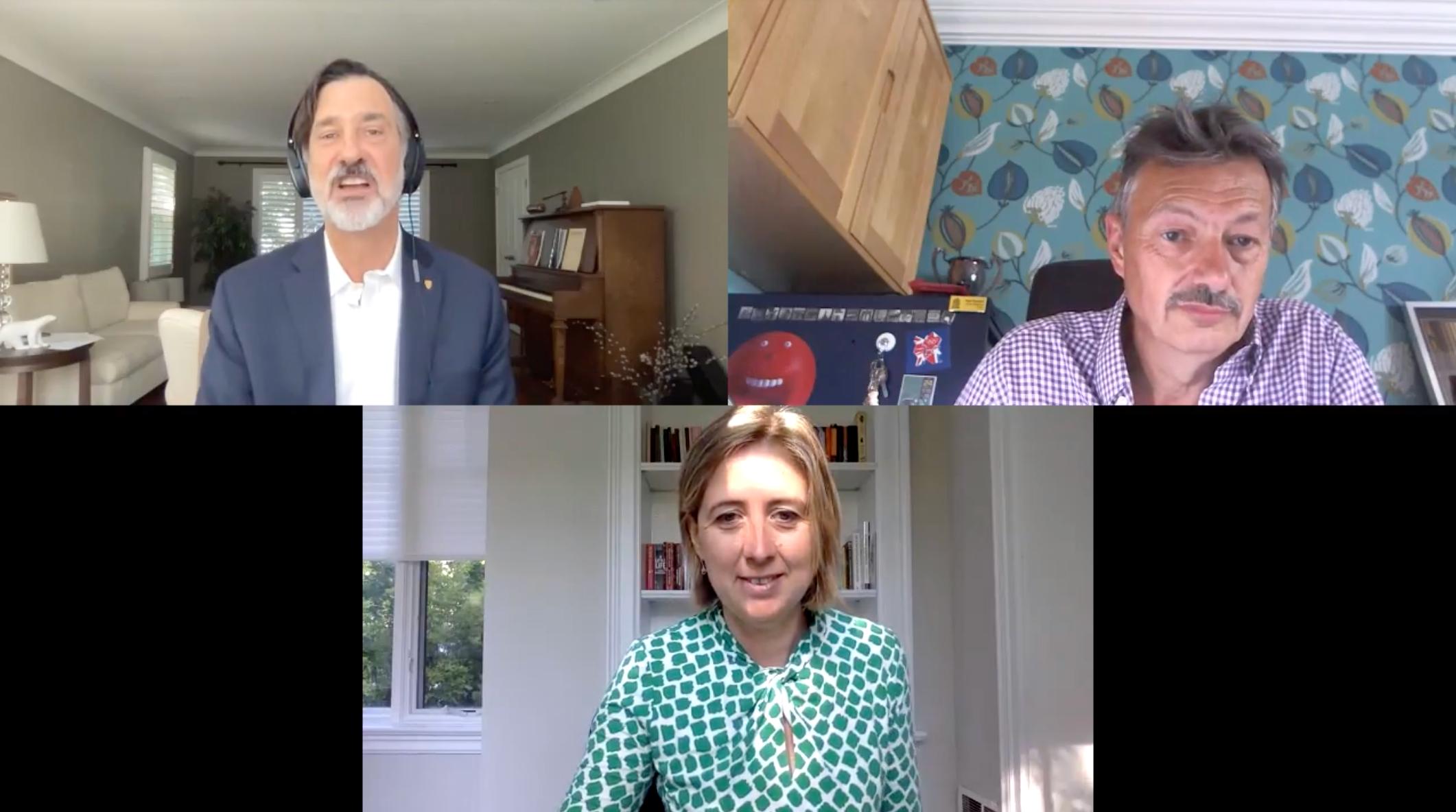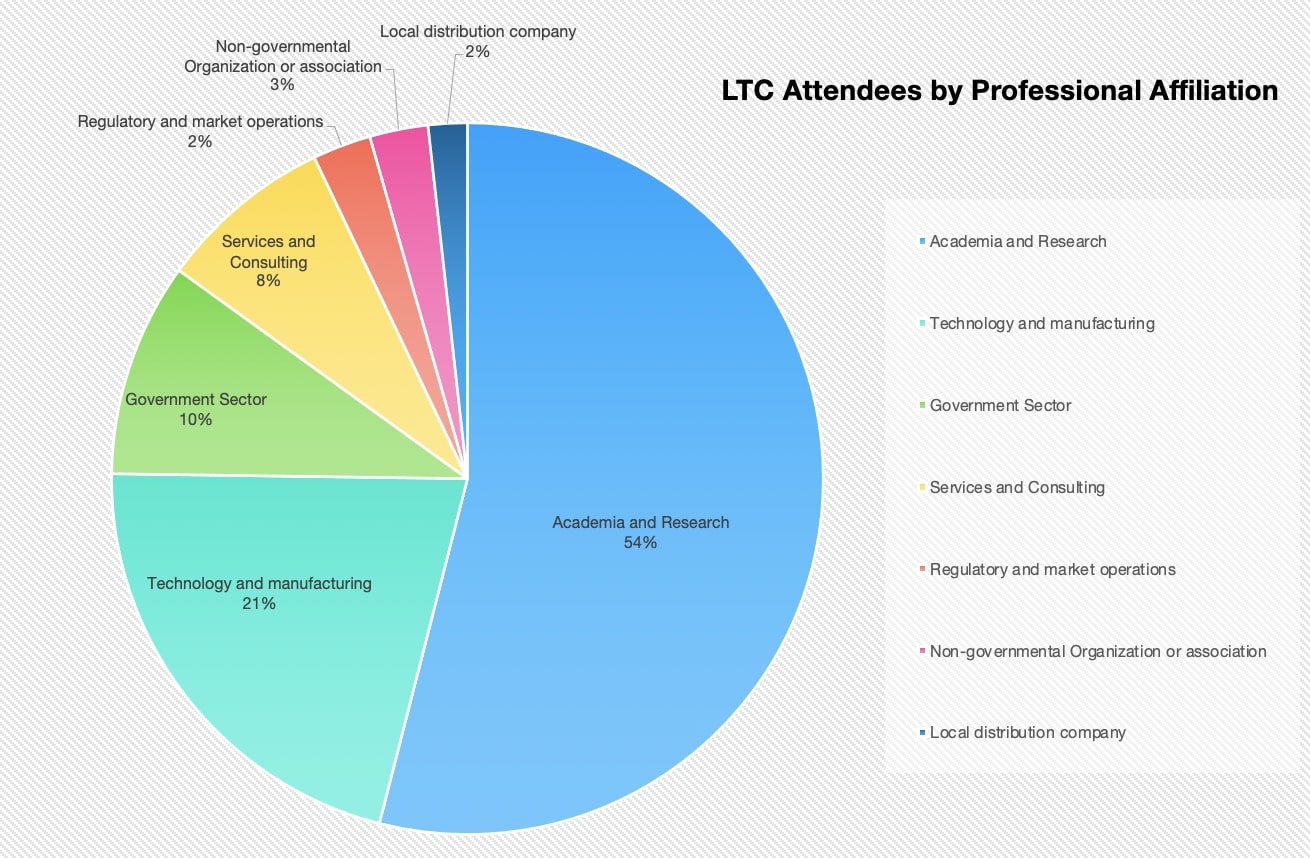Speakers at Leading the Charge Conference provide optimistic outlook for energy sector

Keynote address from Nigel Brandon OBE (top right), also featuring Ian Rowlands (top left) and Jenny Young (bottom)
From June 9-10, the Centre for Urban Energy (CUE) hosted its sixth edition of the Leading the Charge Conference. The virtual event, focused on clean energy solutions to tackle the climate crisis, featured panels and workshops with policymakers and industry experts from across the energy sector and around the world. The event opened with remarks from the CUE’s academic director, Bala Venkatesh, and hosted discussions on critical topics such as electric vehicles, transactive energy, energy storage and hydrogen.
Session 1
The first panel of the day featured a conversation on electric vehicles, hosting sector experts Laura Bryson, Co-Founder of SWTCH, Cara Clairman, president of Plug’n Drive and David Paterson, vice-president of corporate and environmental affairs at General Motors of Canada. The panel was moderated by Electric Autonomy Canada’s Nino Di Cara. Di Cara introduced the session noting that there was a “mountain” to climb to achieve Canada’s target goal to have 30 per cent of new vehicle sales to be zero emission by 2030. “Last year in 2020 just three and a half percent of vehicles sold in Canada were electric vehicles,” Di Cara said.
The significant impact of switching to electric vehicles (EVs) was highlighted by Clairman during her talk. “In many provinces, the drop in emissions if you switch from gas to electric is enormous, 90 plus per cent in some provinces,” said Clairman.
Session 2
Energy storage was the headline of the overall optimistic outlook, industry leaders at the conference had. Edward Arlitt, supervisor for advanced technology research at the Independent Electricity System Operator, Jim Fonger, vice-president of business and development at Ameresco Canada, Alex Rost, manager of resource qualification at ISO New England, and Ramya Swaminathan, CEO of Malta Inc., joined attendees to lead the conversation in the second session. Swaminathan highlighted the economic benefit of renewable energy and the link to its increased adoption. “One of the most critical things is that renewable energy is one of the cheapest forms of generation,” said Swaminathan. Fonger echoed the sentiment, claiming that the cost effectiveness of renewables would bring more economic opportunities for the sector. “The future is bright,” he said.
Session 3
In the afternoon, Andy Fillmore, member of parliament for Halifax, joined Venkatesh in a fireside chat, conveying the political landscape for energy’s future. Fillmore reiterated his contentment with the younger generation’s fight against climate change and stated that educational institutions play a key role in preparing the next leaders in the sector.
Session 4
Following Fillmore’s conversation with Venkatesh was a panel session on the potential for hydrogen to fuel the future featuring hydrogen sector leaders from Bruce Power, Next Hydrogen, Cummins and Ontario Power Generation. “The Nuclear industry already has experience with the storage and handling of hydrogen,” said Heather Kleb, the director of next generation nuclear technology at Bruce Power speaking to the ease of transitioning to a hydrogen powered economy. Conference attendees were eager to learn from the guest speakers. “I want to know more about how renewable energy can be a potential and sustainable candidate to solve the future energy issues,” said Suboohi Shervani, a postdoctoral fellow from the University of Ottawa. “My undergrad is in physics and I'm a proponent of nuclear technology, so I'm really interested to hear Bruce Power and the Ontario Power Generation’s take on blue hydrogen,” said Anna Leckman, a graduate student in the environmental science and management program at Ryerson University.
Session 5
This next session focused on how the power grid could be remodeled with transactive energy. The panel hosted conversations about the fundamentals of transactive energy and its distribution methods. Sitting on the panel was Tanguy Hubert, senior technical leader of distributed energy resource integration from the Electric Power Research Institute, Elli Ntakou, advisor at Quanta Technology and Ben Ullman, product manager at Opus One Solutions.
Session 6
The second day of the conference began with a keynote address from Nigel Brandon OBE, dean of the faculty of engineering at Imperial College London. Brandon was introduced by the British consul general in Toronto and deputy trade commissioner for North America, Jenny Young. In Brandon’s address, the focus was on liquid-gas batteries and the next generation of energy storage to be deployed around the globe.
There was an overwhelming approval from attendees of the lineup of speakers in this year’s conference. “There have been so many interesting discussions these two days, but I really enjoyed learning about the challenges and obstacles we have from the perspective of industry professionals,” said Eleanora Achiluzzi, a master of applied science student at Ryerson University. Achiluzzi noted that she was happy to learn that Canada is on a trend to achieve sustainability in many areas and the technology is available to make the transition.
Sessions 7-11
To engage directly with attendees, the conference hosted workshops throughout the day. These featured five leading experts from across the globe including Nanyang Technology professor, Hoay Beng Gooi, who joined live from Singapore, University of Campinas professor, Walmir Freitas, joining from Brazil, and two professors connecting from the U.K, David Howey of the University of Oxford and Yulong Ding from the University of Birmingham. Shirley Meng, the Zable endowed chair in energy technologies at the University of California San Diego gave the final session of the two-day event, leading an enthusiastic discussion that embodied the positivity both industry leaders and educators showcased.
Venkatesh thanked all guests for joining in the past two days and noted that he was hopeful to see them again in person for the next conference in 2022.
Event Breakdown
113 attendees across various sectors
9 countries
